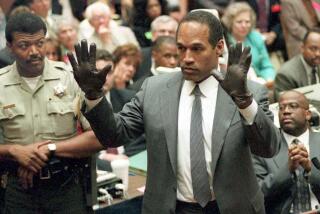Thomas Coffin; Proved Power of TV Advertising
- Share via
Thomas E. Coffin, an NBC research director whose groundbreaking studies in the late 1940s demonstrated the effectiveness of television advertising, died May 13 in Stanton, Calif. He was 83.
Coffin left a job as a psychology professor at Hofstra University to become NBC’s television market research specialist in 1949. He was the first to conduct scientific studies that showed that people bought products after seeing them in television commercials, an unproven concept in TV’s early days.
“We all talk about it today as a given that people see television and act on it. But he was the first to document and quantify the effectiveness of advertising on television,” said Nicholas Schiavone, NBC senior vice president of television network research.
Coffin’s research, known within the industry as the Hofstra studies, compared consumers who owned television sets to those who didn’t. He found that brand awareness was “hundreds of percent higher” among TV owners, said Bill Rubens, who was a market researcher at ABC-TV and later succeeded Coffin as head of research at NBC.
“His study made it a lot easier for everyone to sell television,” Rubens said. It really changed the attitude of advertisers, who started pouring money into television.”
As a result of Coffin’s work, the network was not only able to attract more advertisers away from radio and print media but could charge higher premiums for air time, Schiavone said.
Coffin also helped demonstrate the compatibility of television and radio. Working with NBC’s radio division, he pioneered a method of using TV commercial soundtracks in radio promotions of products. Contrary to the conventional wisdom of the day that said television spelled the death of radio, Coffin’s work showed that using both media could bolster an advertising campaign.
During his tenure at NBC, the network also launched program research, inviting potential viewers to theaters to watch pilots, Rubens said.
Coffin’s interest in the power of television extended to its potentially harmful effects. He was part of the panel that produced an influential 1972 surgeon general’s report asserting that television violence had an adverse effect on some children.
Coffin was instrumental in persuading NBC to help fund the landmark $1.8-million study. He supported the findings, which included figures showing that depictions of violence had increased in cartoons and in comedies and that cartoons were the most violent type of program shown on television from 1967 to 1969. The report, Coffin said during a panel discussion in Los Angeles a few years after its release, provided for the first time “some evidence of causality” between televised and real violence.
He served as NBC’s director of research from 1964 to 1972, then worked as a consultant to the network until 1988, when he retired to Long Island. He later moved to California.
In 1986, he was inducted into the Market Research Council’s hall of fame.
Coffin is survived by his second wife, Mary Ellen, brother Joseph, and three nieces and nephews.
More to Read
The biggest entertainment stories
Get our big stories about Hollywood, film, television, music, arts, culture and more right in your inbox as soon as they publish.
You may occasionally receive promotional content from the Los Angeles Times.











